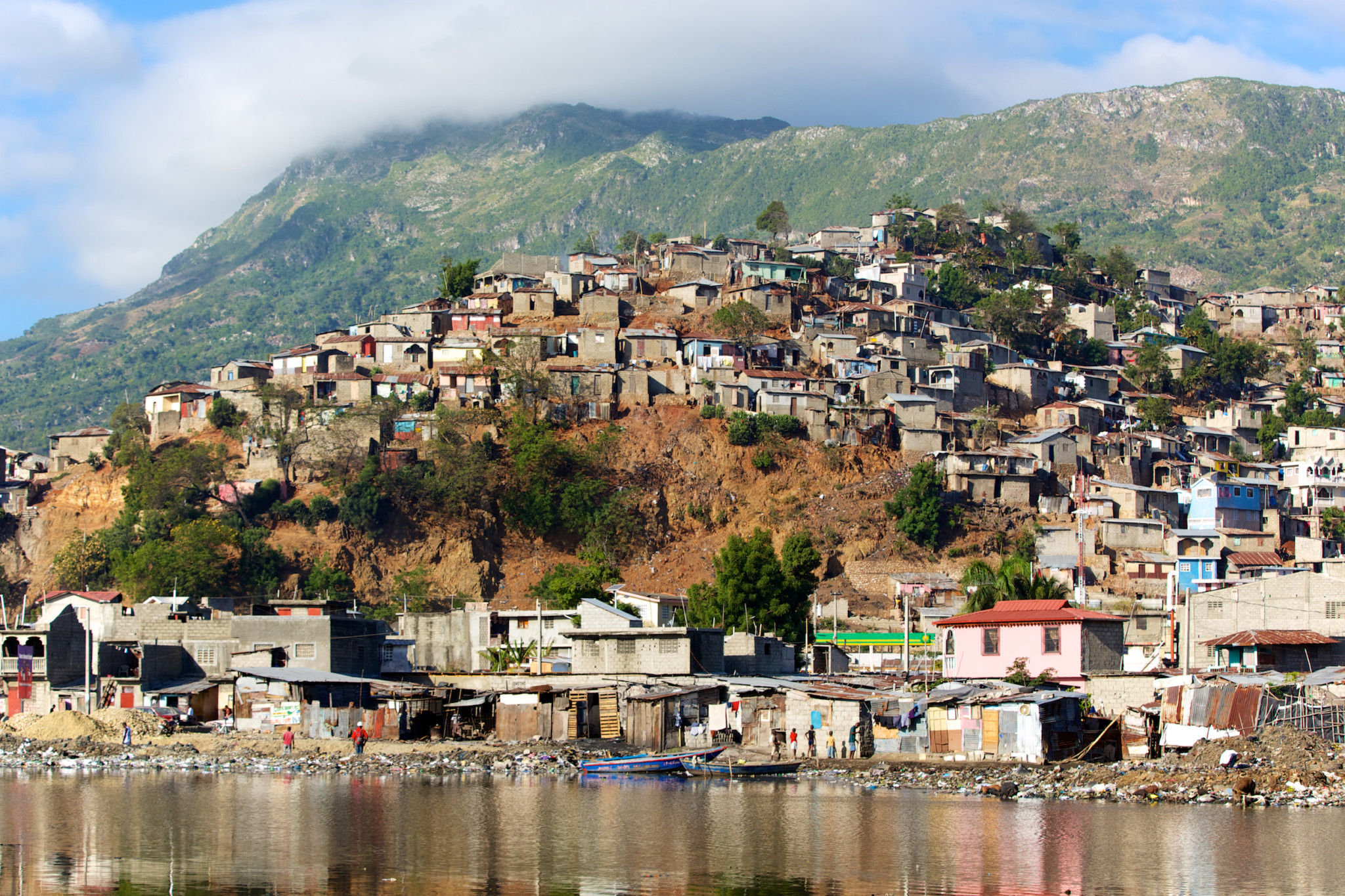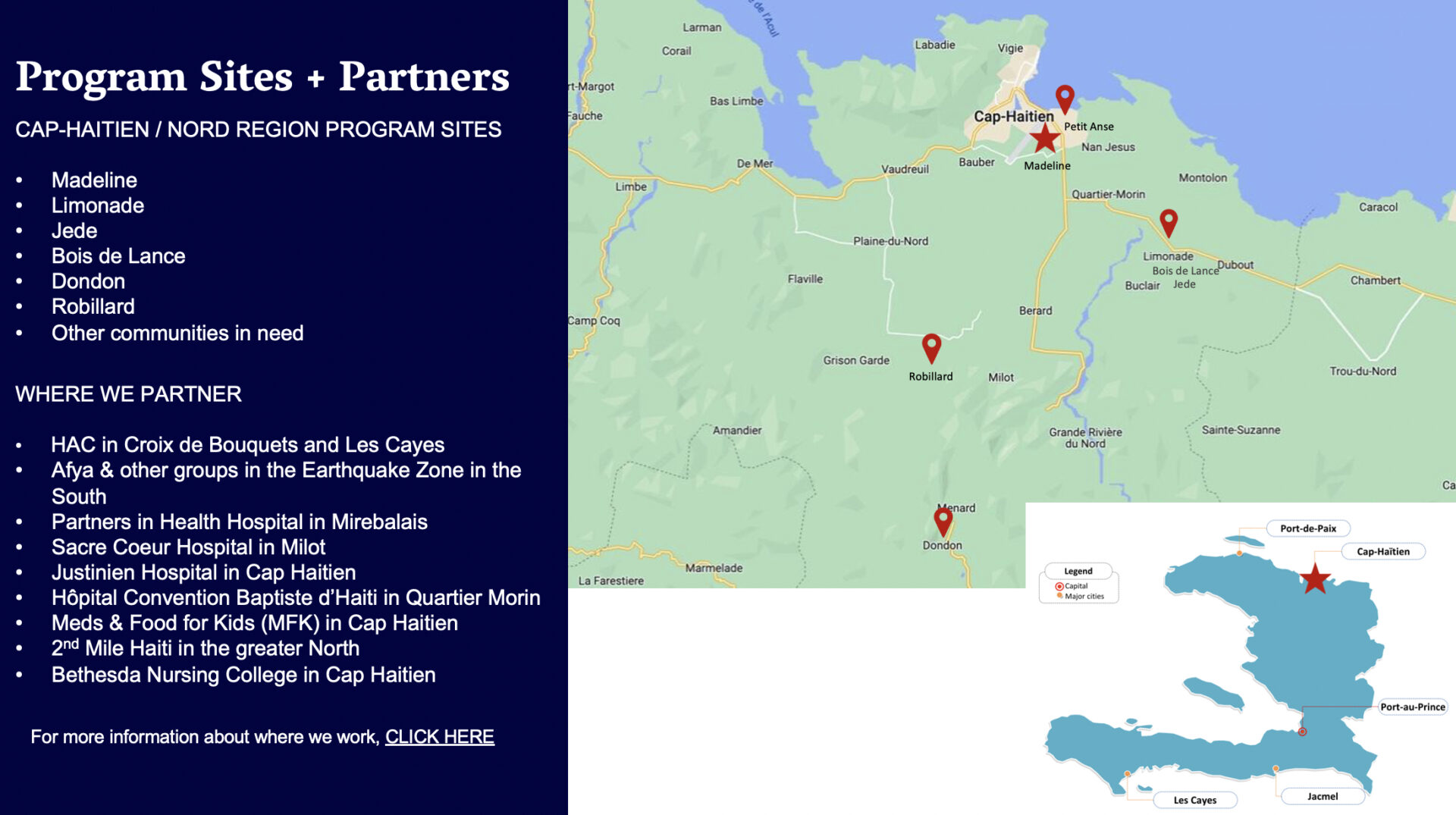
Cap Haïtien is the second largest city in Haiti, with a population of about 190,000 people, and the capital of the Department du Nord, home to about 900,000 people. A seaport city located on the north coast of Haiti, Cap Haïtien is the commercial center of an agricultural region whose main products are coffee, fruits and sugar for export.
While the earthquake of 2010 did not directly physically damage Cap Haïtien, the region was inundated by an influx of refugees, many of whom were women and children and most of whom came without any possessions or financial support. The people of Haiti, including those in Cap Haïtien, suffer some of the worst health conditions in the world and almost 47% of the population lacks access to basic health care.
- Life expectancy is 63 years. (World Bank 2013)
- 30% of the population is considered food insecure. (World Food Programme 2015)
- Infant mortality: 55 per 1000 births (UNICEF 2015)
- 59 per 1,000 born in Haiti die before reaching their first birthday (Ministry of Health 2012)
- Under five mortality rate: 88 per 1000 live births (Ministry of Health 2012)
- An estimated 1 in 285 births will result in a woman's death, a ratio about 16 times higher than in the United States (Partners in Health 2014)
- The population of women of childbearing age in the Cap Haitien area is estimated to be 180,000-200,000
- About 1500 preventable deaths from cervical cancer yearly, 50 times higher than in the US (GHESKIO Centers 2016)
- Waterborne illnesses, such as typhoid, cholera, and chronic diarrhea, account for more than 50% of deaths in Haiti every year
- More than 500,000 Haitians, about 5% of the population, are legally blind; more than 80,000 have no light perception at all


